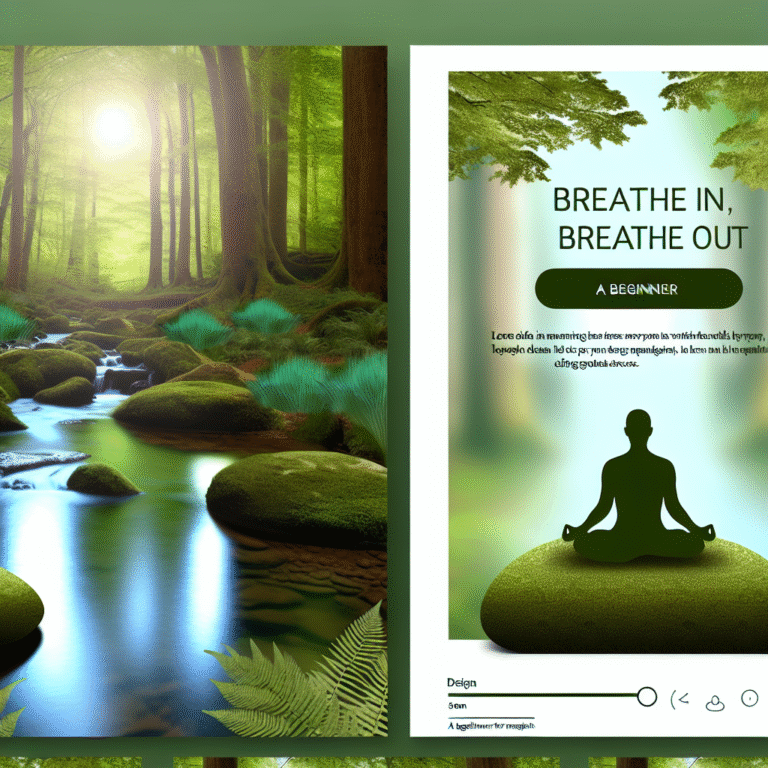
Boundaries Made Easy: Essential Tips for a Healthier Love Life
Introduction
Relationships can be wonderfully uplifting, yet they can also be a source of confusion and stress. One of the most crucial yet often overlooked elements in cultivating a healthy love life is the establishment of personal boundaries. In Boundaries Made Easy: Practical Tips for a Healthier Love Life, we’ll explore how to define and communicate boundaries effectively, and how doing so can transform your relationships for the better.
Think about it: How many times have you felt overwhelmed, taken for granted, or simply dissatisfied in a relationship? The answer may lie in a lack of boundaries. This article will provide you with actionable insights to reclaim your space and foster healthier relationships. So, buckle up, because understanding boundaries is about to become a lot easier!
Understanding Boundaries: The Foundation of Healthy Relationships
What Are Boundaries?
Boundaries are the guidelines that define where one person ends and another begins. They can be physical, emotional, mental, or even sexual. Understanding the different types of boundaries is essential for anyone looking to improve their relationships.
- Physical Boundaries: Concerns personal space and physical touch.
- Emotional Boundaries: Involve how we feel in relation to others’ emotions.
- Mental Boundaries: Encapsulate our thoughts, beliefs, and values.
- Sexual Boundaries: Touch upon consent and sexual preferences.
Why Are Boundaries Important?
Boundaries are vital for several reasons:
- Self-Respect: They show that you value yourself and your personal space.
- Mutual Respect: They teach partners to respect each other’s needs and limits.
- Conflict Prevention: Clear boundaries can prevent misunderstandings and conflicts.
Case Study: Emily and Tom
Emily found herself constantly feeling drained after spending time with her boyfriend, Tom. She realized that he loved to vent about work for hours and often took her emotional support for granted.
While Emily cared for Tom, she needed to set clear emotional boundaries. After directly communicating her needs, such as limiting the ‘venting’ sessions to specific times, both felt reassured in their emotional exchange.
Analysis: This case shows that by setting emotional boundaries, both partners can enjoy a healthier love life, with mutual respect for each other’s emotional space.
Practical Steps for Setting Boundaries
1. Know Yourself
Before establishing boundaries, take some time to reflect on your needs and limits. A simple journaling session can help.
Tips:
- Write down situations where you felt uncomfortable.
- Identify specific areas in your relationships that need clearer boundaries.
2. Communicate Clearly
Effective communication is essential for boundaries to be recognized and respected. Here are pointers for communicating your boundaries clearly:
- Use "I" statements. E.g., "I feel overwhelmed when…"
- Be direct but gentle.
Table: Communication Do’s and Don’ts
| Do’s | Don’ts |
|---|---|
| Use “I” statements | Point fingers |
| Stay calm | Be aggressive |
| Be specific | Generalize |
| Listen actively | Interrupt |
3. Be Consistent
Once you’ve communicated your boundaries, it is essential to stick with them. Consistency reinforces your needs and aids in fostering respect.
Case Study: Sarah’s Family Times
Sarah spent every Sunday with her family, feeling obligated even when she didn’t want to. After vocalizing that she needed one weekend a month for self-care, she found family members gradually accepted this change, leading to healthier family dynamics.
Analysis: This example illustrates the importance of consistency in boundary-setting. Sarah’s self-care was respected over time, reinforcing her health and happiness.
Common Challenges in Boundary-Setting
Fear of Rejection
Many people hesitate to set boundaries due to the fear of rejection or conflict. However, it’s crucial to remember that your needs are valid.
Guilt
Feeling guilty for speaking up about your needs is common but can lead to resentment. Recognize that taking care of yourself is not selfish; it’s essential!
Navigating Resistance
When boundaries are newly established, some partners may resist change. Be prepared for pushback, and consider reinforcing your boundaries kindly but firmly.
Chart: Tips for Overcoming Common Challenges
| Challenge | Tip |
|---|---|
| Fear of Rejection | Remind yourself of self-worth |
| Guilt | Acknowledge your needs |
| Resistance | Reiterate the importance |
Cultivating Healthy Boundaries in Different Relationships
Romantic Relationships
In romantic partnerships, both partners must be on the same page regarding boundaries. Discuss topics such as emotional needs and physical touch openly.
Case Study: Mark and Lisa
Mark and Lisa loved each other but often struggled with personal space. After addressing their needs separately, they agreed on specific times for socializing and alone time, leading to a deeper mutual understanding and intimacy.
Analysis: This example shows how open dialogue about personal needs can lead to emotional balance in romantic relationships.
Family Dynamics
Family relationships often come with inherited expectations. Establishing boundaries can create healthier interactions.
Case Study: John’s Situation
John always felt pressured to attend family gatherings. After discussing his need for personal time with his family, they were surprisingly supportive, leading to healthier family relationships.
Analysis: John’s story emphasizes that families can adapt when boundaries are set kindly and clearly, promoting mutual respect.
Friendships
Even friendships need boundaries. Consider scenarios involving time commitments or emotional availability.
Benefits of Boundaries in Friendships
Maintaining boundaries allows friendships to flourish without becoming toxic. It fosters mutual respect and enhances emotional depth.
Maintaining Boundaries Over Time
Self-Reflection
Check in with yourself periodically. Are you feeling okay with the boundaries you’ve set? Adapt them as needed.
Reassess Your Relationships
Not all relationships are meant to endure, especially if your boundaries are consistently disrespected.
Conclusion: Empowering Yourself Through Boundaries
By equipping yourself with the tools discussed in Boundaries Made Easy: Practical Tips for a Healthier Love Life, you’re taking a crucial step toward a more fulfilling and balanced love life. Whether through self-reflection, effective communication, or consistent enforcing of your boundaries, you hold the keys to your emotional well-being.
So, step forth and take charge. Remember, healthy boundaries pave the way to not just better relationships but a better you!
FAQs
1. What if someone doesn’t respect my boundaries?
Start by addressing the situation directly. Reinforce your boundaries calmly and assess if the relationship is worth maintaining.
2. How do I know if my boundaries are too strict?
If your boundaries lead to isolation or hinder intimacy, consider softening them or seeking external advice to reassess their necessity.
3. Can boundaries change over time?
Yes! As individuals grow and evolve, so too might their boundaries. Regular check-ins with yourself and your partner can help navigate these changes.
4. Are there benefits to setting boundaries even in professional relationships?
Absolutely! Setting boundaries in professional environments promotes productivity and reduces burnout.
5. What if I feel guilty for setting boundaries?
Feeling guilty is natural, but remember your needs are valid. Setting boundaries fosters healthier relationships and self-respect. Prioritize your well-being!
Incorporating the keyword Boundaries Made Easy: Practical Tips for a Healthier Love Life throughout this article not only optimized for SEO but also ensured that the points made were clear and actionable. Embrace the power of boundaries, and watch your love life transform!

















